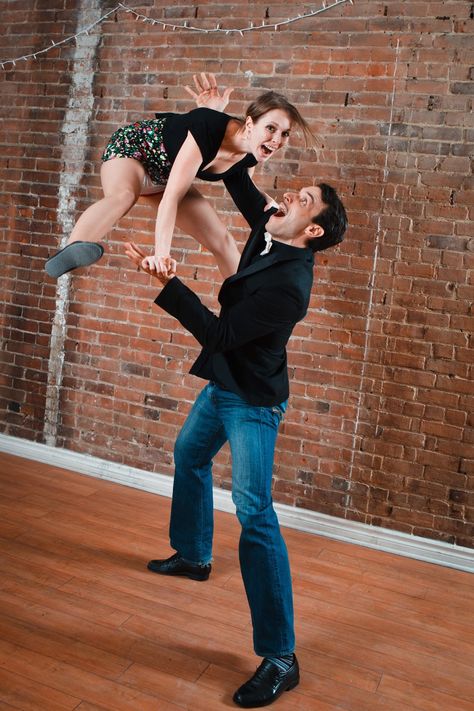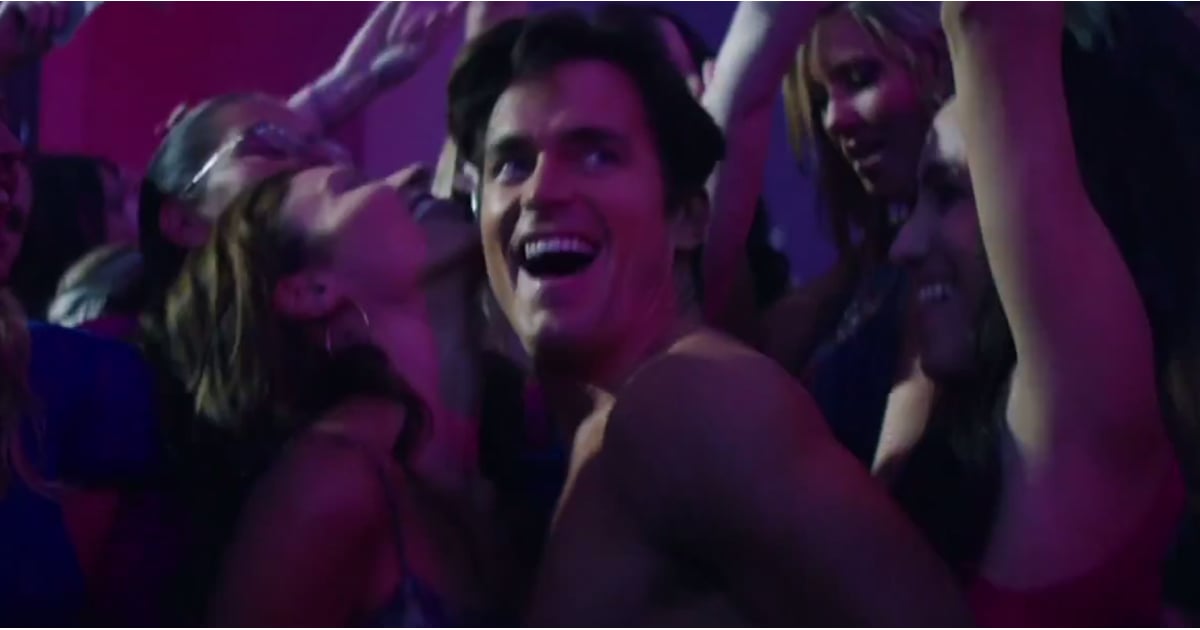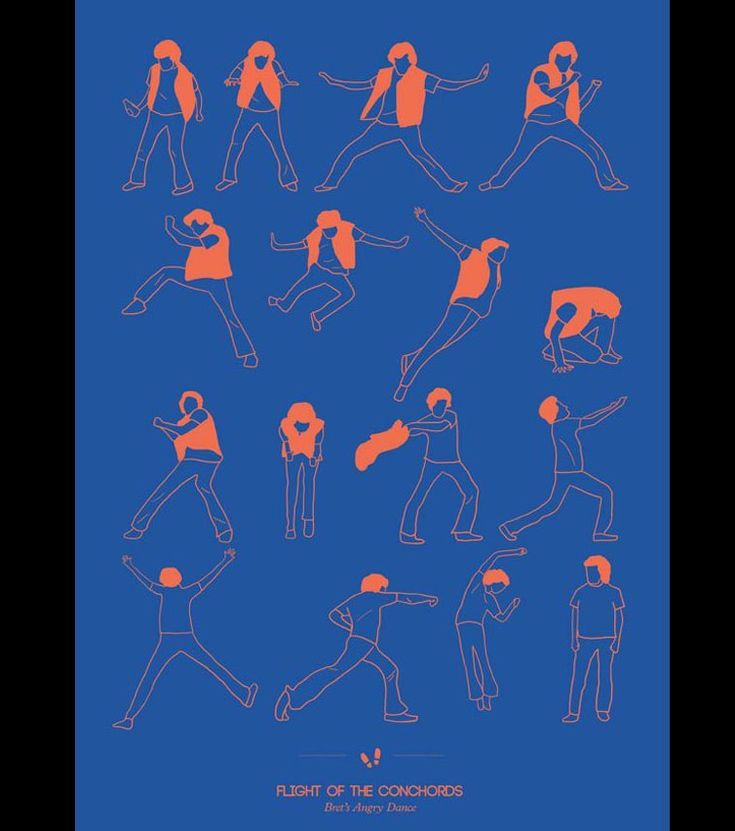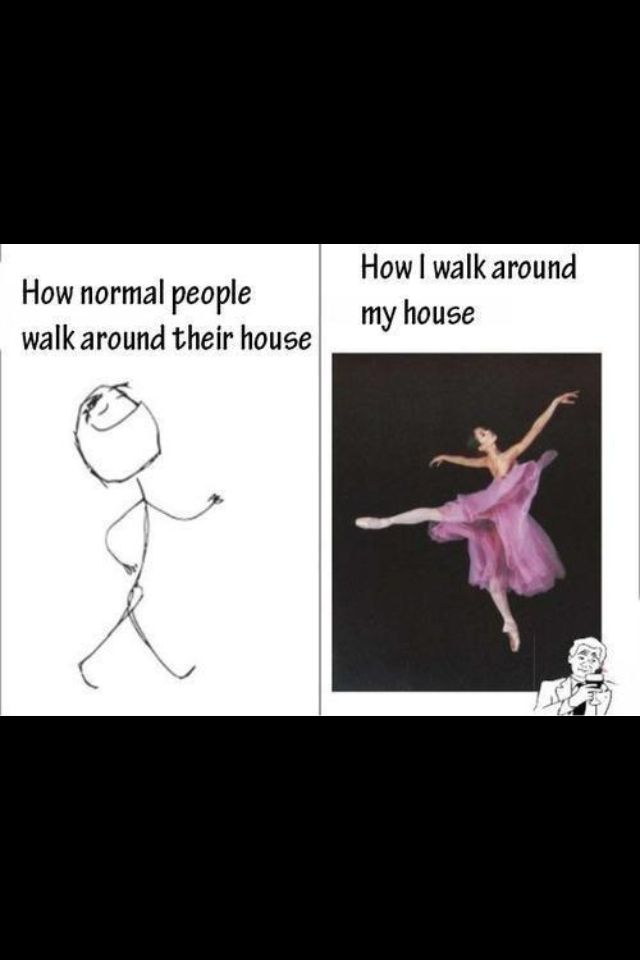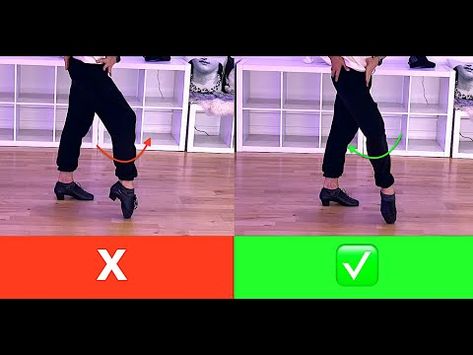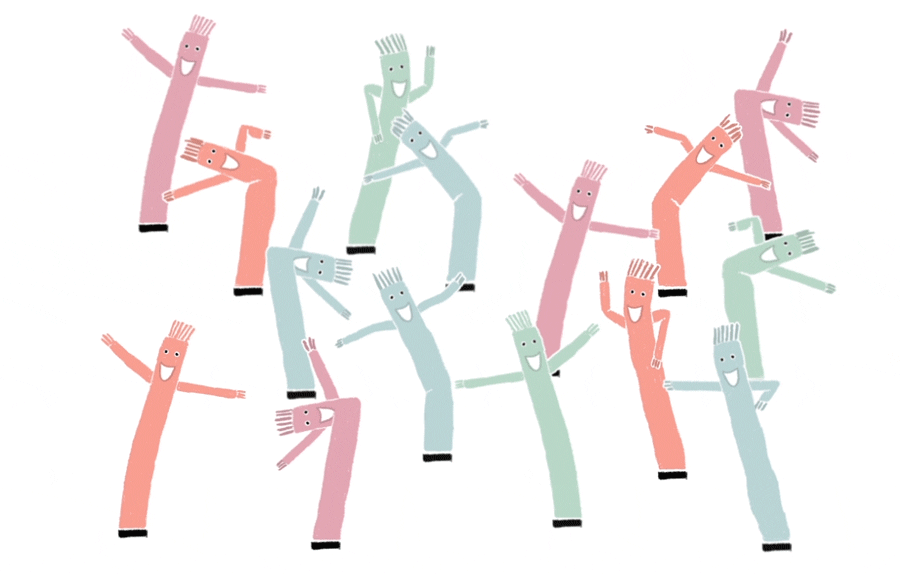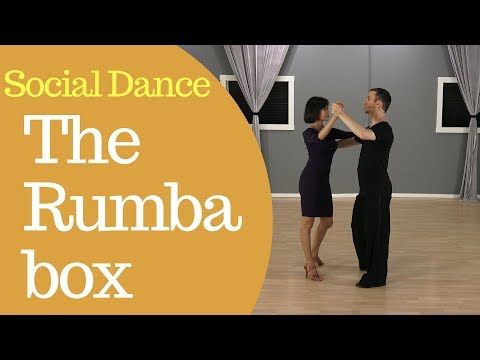How to dance the swing
How To Swing Dance For Beginners (Step By Step Guide)
Table Of Contents:
Swing Dance History & Character
How To Count In Swing
Swing Basic Step #1 – Video
Swing Basic Step #2 – Video
Learning how to Swing dance isn’t rocket science…
Like all Ballroom dances, Swing dancing is based on specific basic steps that once mastered can be applied to all kinds of turns, hand swaps and spins. Below you will learn the 2 main basics steps of Swing.
What is Swing Dancing?
This style of Swing is East Coast Swing which originates from Lindy Hop. It is a Stationary partner dance that doesn’t travel much – Meaning it is pretty much danced on the same spot – As opposed to a traveling Ballroom dance like Waltz. The character of this dance is playful and lively. There are a lot of turns and spins that make this dance really fun for couples.
Swing Songs To Practice To:
* Many of the popular songs played on the radio fit this dance including:
Zac Brown Band – Loving You Easy – Slow Tempo
Michael Bublé – Haven’t Met You Yet – Faster Tempo
How To Count The Swing
Beginner Way of Counting the Swing:
Rock Step, Triple Step, Triple Step.
The Count using numbers:
1,2 (Rock Step), 3 a 4 (Triple Step), 5 a 6 (Triple Step).
* We strongly recommend that you count in the beginner way for a while. However, it is important to understand that the rocks step has two full weight changes to 2 beats of music. And the triple steps (3 a 4 Or 5 a 6) have three weight changes to only 2 beats of music. This makes the triple steps faster.
How to Swing Dance – Basic Step #1:
Breakdown of the Swing Steps (East Coast)
Men:
Starting with left foot
Rock step – Step back with left and replace on right.
Triple step to left – Side, close, side (left, right, left)
Trip step to right – Side, close, side (right, left, right)
Women:
Starting with right foot
Rocks step – Step back with right and replace on left.
Triple step to right – Side, close, side (right, left, right)
Triple step to left – Side, close, side (left, right, left)
The Lead:
* Connect fwd to each other before starting to dance.
Leaders: Apply pressure fwd using the entire body but mostly the left arm (For the rock step). Make sure to extend the elbow slightly. Now, after the rock step, using your body weight and right arm connection, lead the followers to triple side steps in both directions. Ladies, don’t anticipate the lead – Simply connect forward to your partner to feel his lead.
Basic #2: Swing Outside Turn (Right Underarm):
Breakdown of Outside Turn (Above)
Men:
Starting with left foot
Rock step – Step back with left and replace on right.
Triple step to left – Side, close, side (left, right, left)
PIVOT 1/4 to left (On left foot)
Trip step to right – Side, close, side (right, left, right)
Women:
Starting with right foot
Rocks step – Step back with right and replace on left.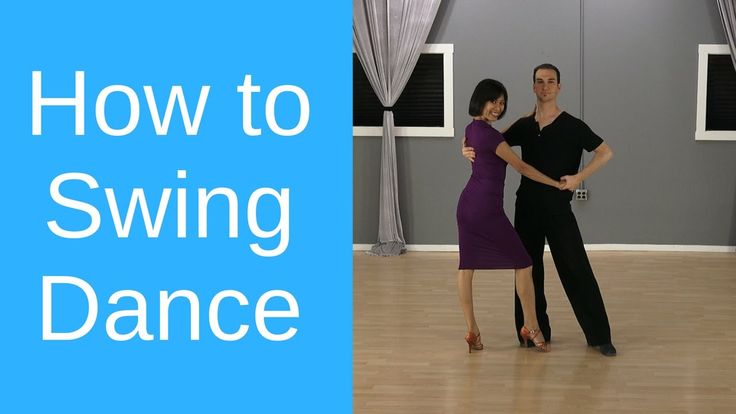
Triple step to right – Side, close, side (right, left, right)
PIVOT 3/4 to right (On right foot)
Triple step to left – Side, close, side (left, right, left)
The Lead:
* Connect fwd to each other before starting to dance.
Leaders: Just like in the most basic step, extend your left arm to the followers to allow her to do her Rock Step. Immediately after, as you do the side triple step to the left – raise the left arm just above the follower’s head (indicating a turn coming up). Now on count “&” circle the left arm over the follower’s head as she turns underarm. Make sure to extend your arm to clear your partner’s head.
Other Swing Moves you should learn:
– The Inside turn
– Changing hands behind back
– The Cuddle turn
– The Stop and Go
– Kicks & Flicks
Check out all our Swing dance lessons
Want More Dance Lessons?
We offer a membership that includes access to 300+ Ballroom and Latin dance videos online. Including American & International style videos.
Including American & International style videos.
Membership Info & Registration
Get More Dance Lessons:
How to Ballroom dance For Beginners
How To Cha Cha Dance
Rumba Dance Steps
How To Waltz
Salsa Basic Steps
How To Dance Bachata
How To Dance At Weddings
Learn Basic Swing Steps
Swing is a lively, non-progressive partner dance that can be danced to a wide variety of music, from blues to rock & roll. Non-progressive means it's mostly performed in one spot, so it's very convenient on a crowded dance floor.
- Basic steps
- Instructions & Diagrams
- Video
- Recommended Video Lessons »
Quick intro
Swing is one of the most versatile partner dances you can learn - very social and beginner friendly. Easily adaptable to a wide range of tempos, it involves movements with lots of swinging, spinning and rhythmic, creative footwork.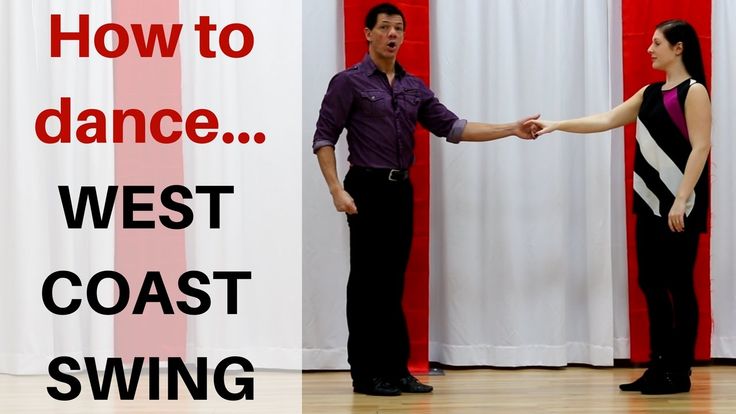
There are many different styles of swing, the term actually refers to a group of dances that developed from the swing style of jazz music in the first half of the last century. There's Lindy Hop, Boogie-Woogie, Jitterbug, Shag, Charleston, West Coast and East Coast Swing, just to name a few. Each of these dances has its own distinct flavor.
One of the most popular and very suitable for beginners is the East Coast Swing. It's a bit more social and relaxed than other versions. It's also a formal ballroom dance and the easiest to learn. Perfect for beginners, which is why we'll focus on this version here. It will create a good foundation and is the base for other more complex versions.
East Coast Swing can be danced to a variety of music styles. If it's written in 4/4 time and has a tempo between 135-170 beats per minute, you can swing it.
To dance swing you'll need a partner, a sense of humor, and a bit of endurance. It may seem a bit intimidating at first, especially if you're watching those who really mastered it. But as with all things, you have to start with the basics. And the basics are easy. Once you learn the fundamentals, you'll be swinging in no time. Always remember, wear comfortable shoes. Now let's go swinging.
But as with all things, you have to start with the basics. And the basics are easy. Once you learn the fundamentals, you'll be swinging in no time. Always remember, wear comfortable shoes. Now let's go swinging.
Basic steps (East Coast Swing)
Beginners usually start with East Coast Swing, because it is the easiest of all swing styles. Here we will show you the basic 6 count step for East Coast Swing.
East Coast Swing has a basic count of 1&2, 3&4, 5,6. It's known as a triple step swing. The basic pattern is triple step, triple step, and a rock step.
When you're starting out you can replace the triple step with a single step. In that case the pattern would be step, step, rock step or rock step, step, step, depending on how you start counting. The overall progression is, of course, the same.
The triple step is really not that difficult to master, it is performed in a chasse-like manner - side step, together, side step.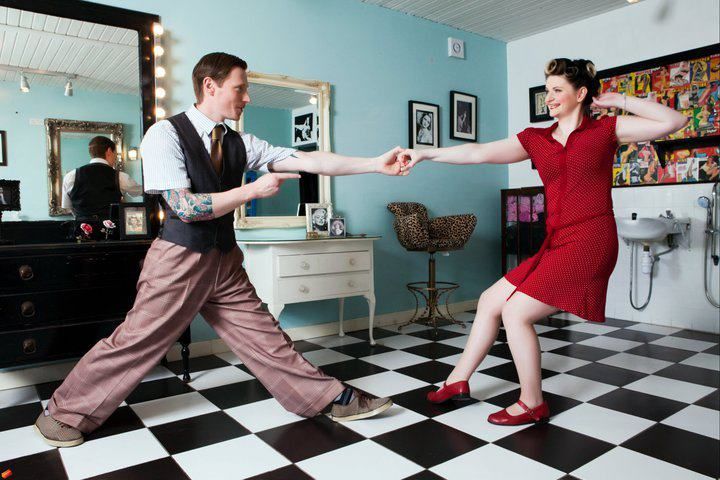
Instructions & Diagrams:
Basic Steps For Men: The man starts with his left foot.
- 1&2: Triple step (chasse) to the left (left-right-left)
- 3&4: Triple step to the right (right-left-right)
- 5: Step backward with your left foot
- 6: Weight shifts to your right foot
Basic Steps For Women: The woman starts with her right foot.
- 1&2: Triple step (chasse) to the right (right-left-right)
- 3&4: Triple step to the left (left-right-left)
- 5: Step backward with your right foot
- 6: Weight shifts to your left foot
Remember, keep the steps small.
Video
Leon and Kim will show you the basic steps, how to turn, and more:
more videos »
Now let's have some more fun, let's do some kicking:
Where to go next?
When you're ready for more fun, check out our recommended video lessons. Video is a great way to learn dancing.
Swing dance - style descriptions West coast swing, boogie-woogie, lindy hop, charleston, jive and many others in a certain way are descendants of swing. Swing was born along with a wave of African-American migration from the southern states of America to the more tolerant northern states.
Initially, variations of swing compositions were very different depending on the city, and this dance direction was called by the single term “swing” only in 1911 year.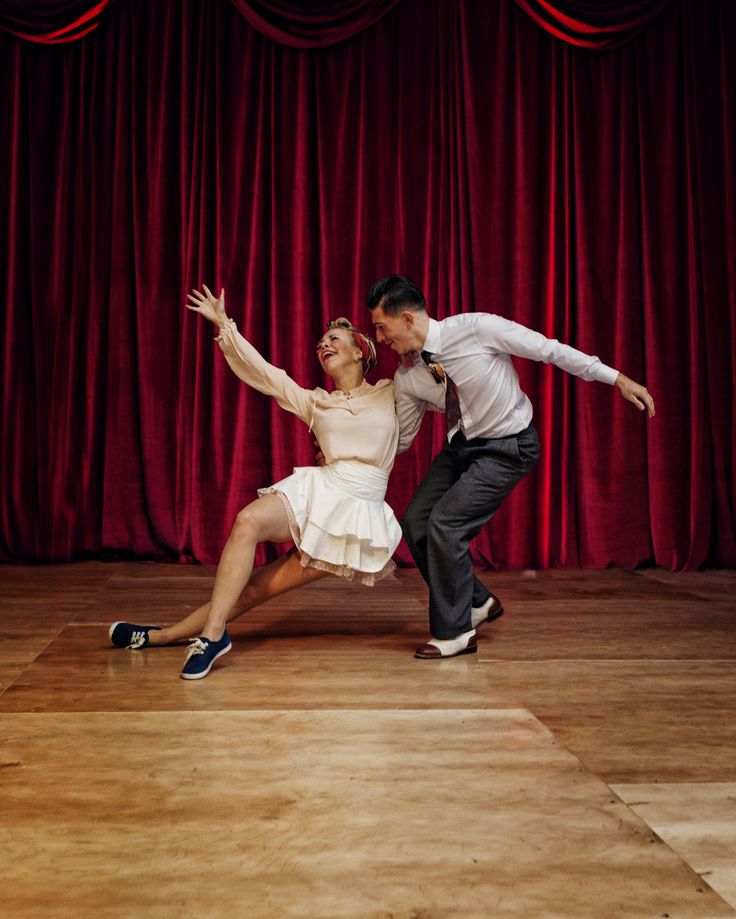 Since that time, Swing began its victorious march across America and Europe, energetically absorbing the unique features and characteristics of the area where it was performed. It is for this reason that there are so many varieties of swing in the modern world. But the core of the dance is still African-American folklore.
Since that time, Swing began its victorious march across America and Europe, energetically absorbing the unique features and characteristics of the area where it was performed. It is for this reason that there are so many varieties of swing in the modern world. But the core of the dance is still African-American folklore.
A characteristic feature of swing is close contact between partners, as well as the presence of acrobatic elements. But in view of the fact that this dance is still alive and dynamically developing, it continues to change daily.
Swing dance in Moscow can be conditionally divided into "ballroom" and "street" dances. If the former are distinguished by a certain and rather strict set of figures performed at various kinds of competitions, then the latter is danced for the soul at parties and other informal events. Roughly speaking, in "street" swing there is less technique, but more freedom and improvisation.
THIS STYLE IS TEACHED
GallaDance, dance clubs
Moscow, m. 0008
0008
+7 (495) 786 76 36
Dance Republic, dance school
Moscow, Andropova Prospekt, 22, SEC "NORA" 1st floor
+7 (499) 551 77 71
E&8D
Moscow, 1st Tverskaya-Yamskaya, 8
+7 (977) 455-19-45
GALEX, dance school
Moscow, Borisovka
+7 (916) 484 06 25
, dance school
Penza, st. Kuprina, 5a
+7 (8412) 212-922
LightStyleStudio, dance school
Naberezhnye Chelny, Novy Gorod, Prospect Mira 13a Kam Island
+7 960 070 85 51
Related news
06 September
Blackpool Dance Festival: how Russian dance duets performed
Dance.ru
16 January
Vasily Kozar: "In "Dancing with the Stars" you will see ballroom dancing from a new angle"
Dance. ru
ru
24 April
Champions Ball Online 2020: Watch
LiveDance.ru
16 April
Arthur Astman: "Don't be shy"
Dance.ru
12 April
Champions' Ball 2016: Registration Closes
Dance.ru
Registration
for competitions
and festivals
Ural Dance Cup 2022
11/6/2022 - 11/6/2022
Championship MACT TOP-100 International Standard, Argentine Tango
11/6/2022 - 11/6/2022
SRDS American Smooth Cup for Professionals and Juniors
11/6/2022 - 11/6/2022
Ural Latin Cup among Amateurs
11/6/2022 - 11/6/2022
Moscow Ball 2022
3.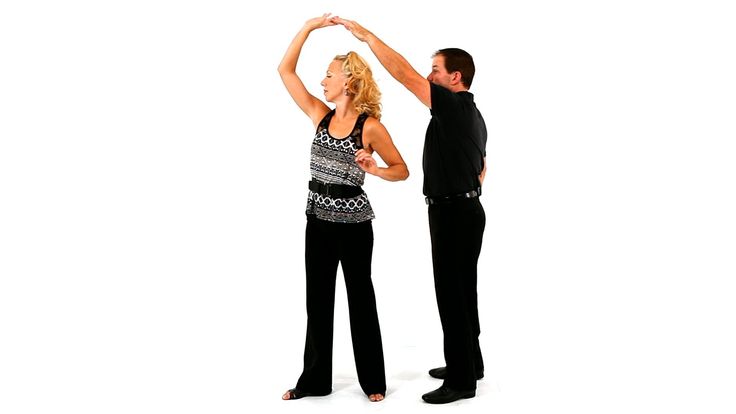 12.2022 - 4.12.2022
12.2022 - 4.12.2022
Moscow Ball Professional Competitions
3.12.2022 - 4.12.2022
Saint Petersburg Star 2022
12/18/2022 - 12/18/2022
MASKT TOP-100 International Latin Championship
12/18/2022 - 12/18/2022
dance schools
GALLADANCE, Dance clubs
MDC NRG, Dance School
PROTANS, Dance Center
All Dancing Schools
All for dancing
Grishko
Zumbastore.ru
All for dancing 9000
, what is Modern Swing (swing West Coast)?
Modern Swing (Modern Swing) is the second name of the dance, which is widely known in the world as West Coast Swing (in Russian it sounds like West Coast Swing). This is a couple dance to modern music ♫, popular all over the world, especially in Europe and the States.
In recent decades, the dance has gone far beyond the US and has become popular in Europe, Asia, Russia, Ukraine, Australia and many other countries.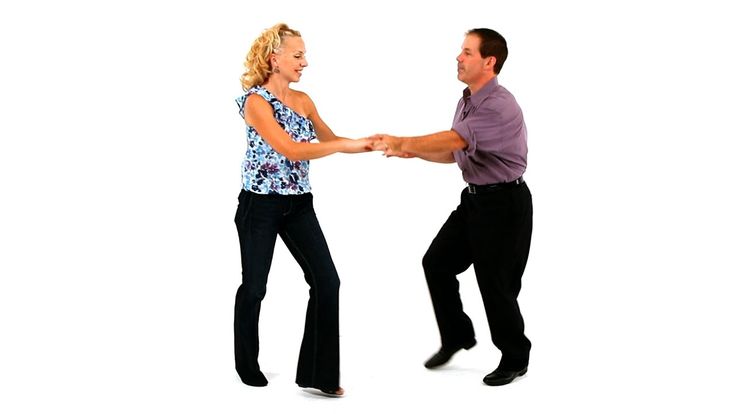 The community thought about changing the name, the usual West Coast Swing became difficult to develop as a new direction. The discussion also took place in the USA, where it was proposed to rename the dance to Modern Swing by Benji Schwimmer, a top dancer, star of the videoconferencing community, participant and director of a TV show on American television.
The community thought about changing the name, the usual West Coast Swing became difficult to develop as a new direction. The discussion also took place in the USA, where it was proposed to rename the dance to Modern Swing by Benji Schwimmer, a top dancer, star of the videoconferencing community, participant and director of a TV show on American television.
In Russia, the dance appeared in 2008 as VKS, but now they are starting to use a new short name - Modern Swing.
What is social partner dancing?
Social couple dances are dances that do not require years of training, they are dances for socializing and having fun. Anyone without dance experience can learn the basics of dance in a couple of months of classes and go to their first party! All it takes is a desire to dance and a love for music!
Social dances for couples are about making new friends, traveling together, having fun at parties and communicating in the language of dance!
There are many different dances in the world. We invite you to get acquainted with Modern Swing!
We invite you to get acquainted with Modern Swing!
What makes Modern Swing attractive?
- worldwide fame - Modern Swing is danced all over the world (especially in Europe and America) - a great opportunity to make new friends in different parts of the globe! Major dance events (West Coast Swing Events) are held almost every week in different cities around the world. More than 20 events are held annually in Russia, 10 in Moscow. Modern Swing Events list and Modern Swing Events map.
- Variety - Modern Swing can be gentle and sensual, playful and sexy, fast and technical, relaxed and fun - whatever you make it!
- modern popular music - you can dance to your favorite tracks!
In Moscow, several Modern Swing parties are held every week, including open-air parties (during the warm season), competitions are increasingly being held.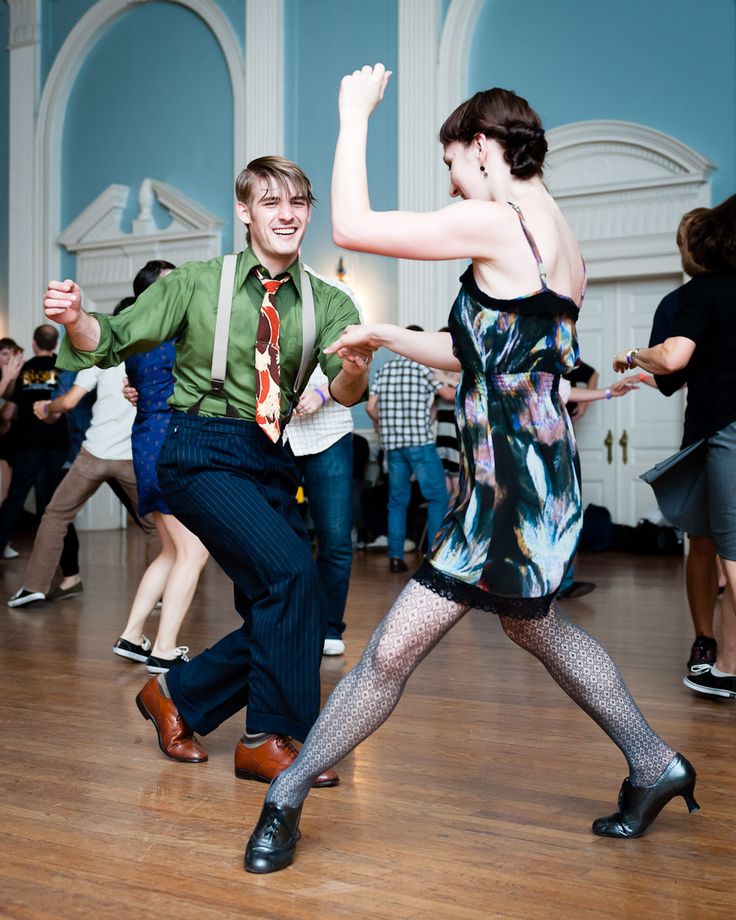
If you dance Modern Swing, you will be able to express yourself in dance, enjoy parties, impress others, tighten your figure - it depends on your goals! In addition, an invitation to a dance is a great opportunity to get to know each other ;-)
A bit of history
West Coast Swing - this is how West Coast Swing is translated into Russian - originated on the West Coast of the United States in
1950s. Dean Collins, an American dancer and choreographer who appeared in Los Angeles in 1937, contributed to the development of this style.
The roots of the dance go back to the "Swing era" (late 1920s-1940s). At that time, many jazz and blues musicians used "swing" in sound - in music, the first note of each pair is tightened, creating the effect of pulsation, swing (translated into Russian, "swing" - swing, oscillation).
When applied to dance, the term "swing" covers a range of dance styles that developed at that time, as well as modern dances descended from them.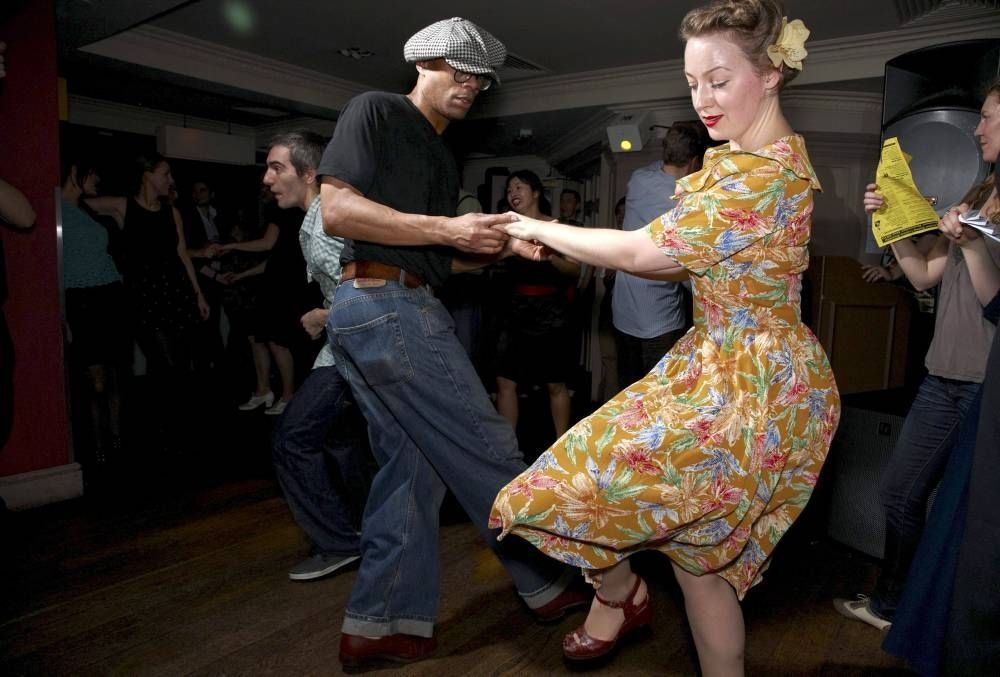 Here are some: Lindy Hop, Charleston, Shag, Balboa, and then Jive, Rock 'n' Roll and, of course, the West Coast Swing (West Coast Swing).
Here are some: Lindy Hop, Charleston, Shag, Balboa, and then Jive, Rock 'n' Roll and, of course, the West Coast Swing (West Coast Swing).
The modern name of the dance "West Coast Swing" first appeared on the pages of a book by dance teacher Arthur Murray, published in 1947 year. But teachers used the term Western Swing for another ten years in their notes and schedules. And in 1962, the inscription "West Coast Swing", as the name of the dance in its current form, was already on the advertising posters of the American dance teacher Skippy Blair. In 1988, West Coast Swing was declared the "Official Dance of the State of California".
Modern Swing (West Coast Swing) appeared in Russia in 2008.
A bit of technology
In pair dances, one of the partners is the leader (leader), usually a man, and the other is the follower (follower), usually a woman. Initiative and activity are the role of a leader, and a follower listens and decorates, complements, creates an atmosphere. The dance reveals a philosophy of relationships that can be extended to a lifetime.
The dance reveals a philosophy of relationships that can be extended to a lifetime.
Modern Swing is a pair dance in which both partners can improvise and have almost unlimited freedom of expression.
Modern Swing dance along the line (slot). Someone thinks that this is due to the fact that he was born in the narrow aisles of cinemas and corridors ;-) For the most part, the partner moves, and the partner, while remaining relatively in place, directs her movement (leads).
The interaction of partners is very soft, elastic. Thanks to this, the dance is so smooth and "viscous".
Almost any music is suitable for dancing: funk, RnB, almost all modern pop music and, of course, blues. More information about what music Modern Swing dance to is written in the ♫ article
Would you like to try?
Come to the dance school LisoBorie!
It doesn't matter how old you are or if you have dance experience
At any age, with any level of training, you can learn to dance in a pair easily and naturally.